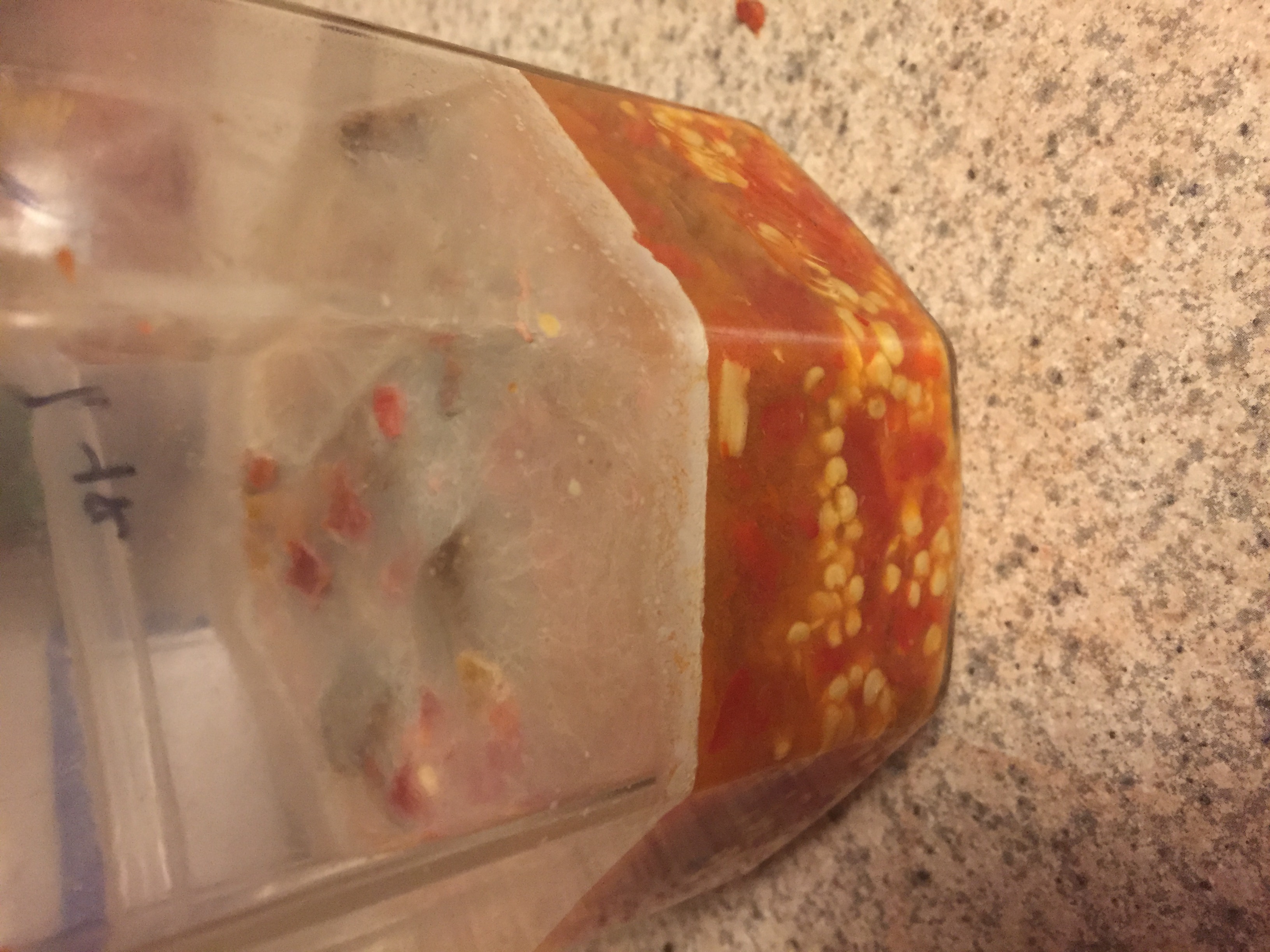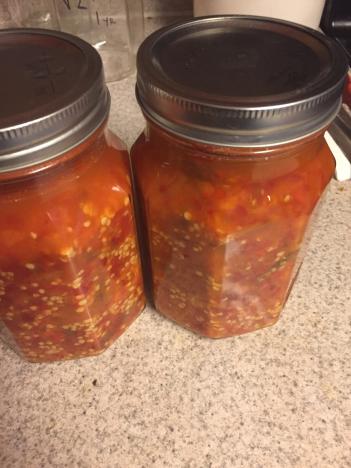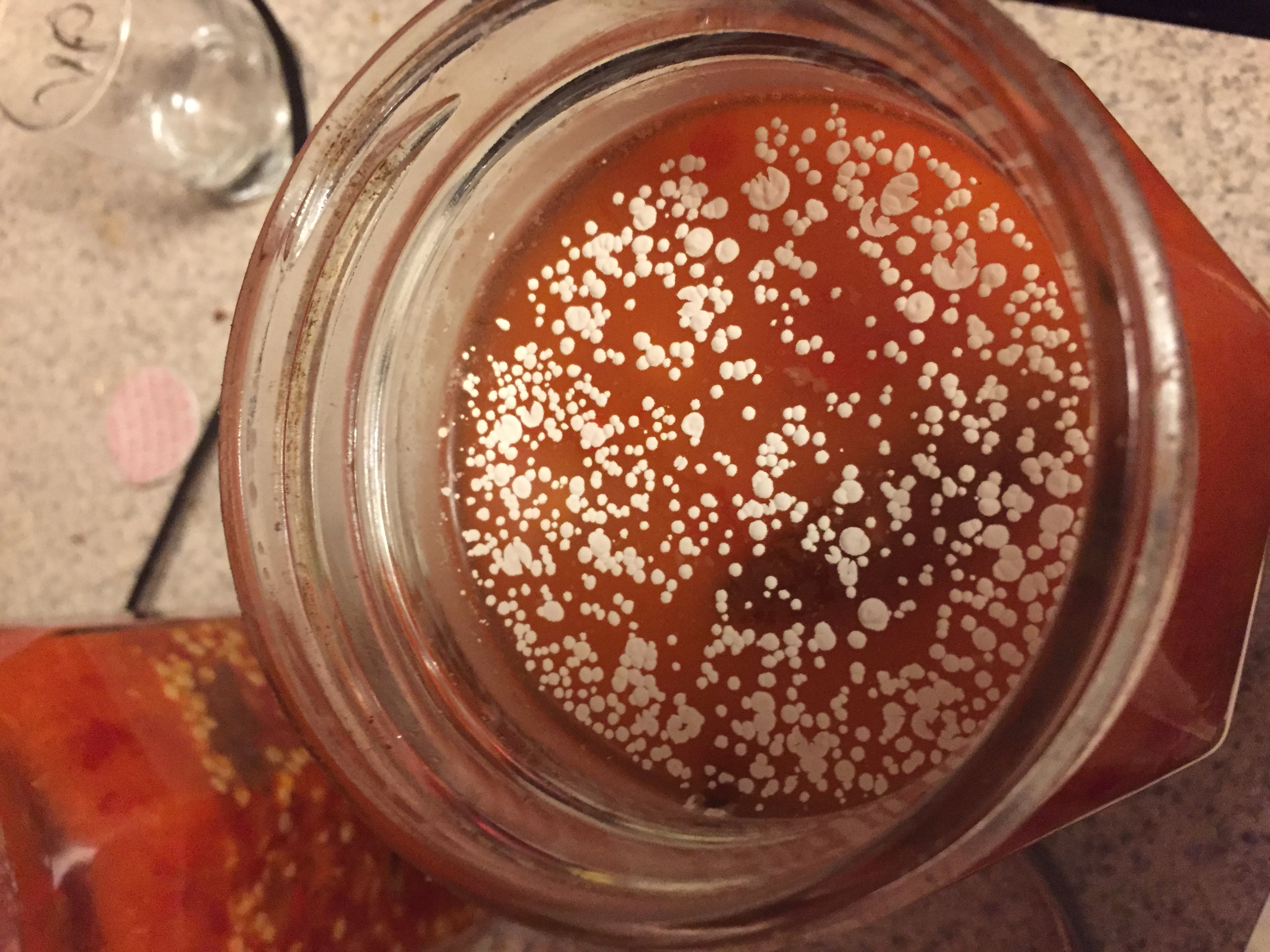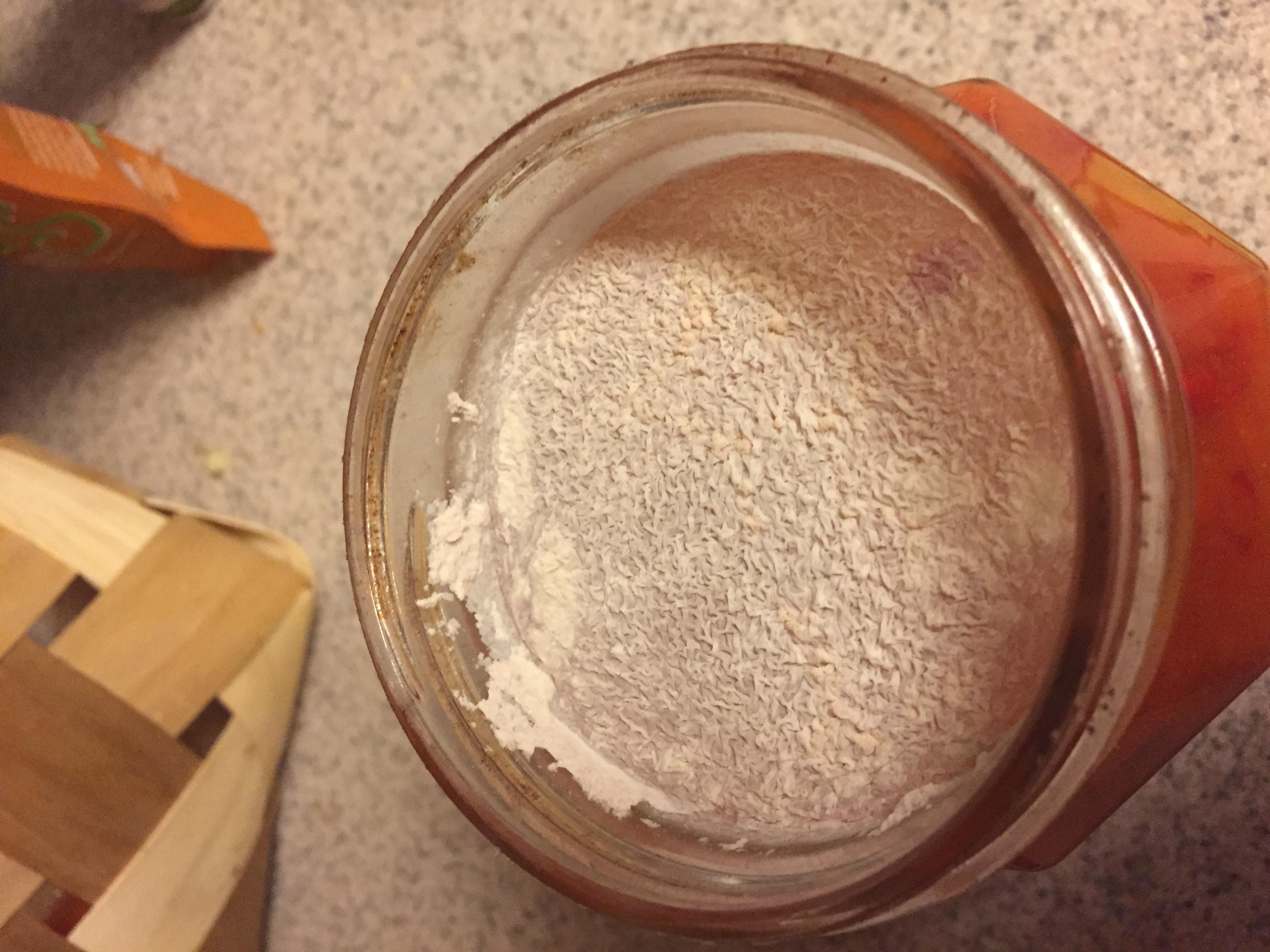So, I've started my second batch of ferments for a hot-sauce.
Ingredients by weight below:
Habaneros - 388.4g
Garlic - 171.5g
Thai Chili - 375.3g
Red Chilis - 690.1g
(Total Non-salt-weight: 1625.3g)
I went by the Hunter Angler Garden Cook Recipe and added just over 2% salt by weight: (I also have blood pressure issues, so minimal salt is preferred).
40g salt
2 Cups Water
All of the above blended (took a bit of doing with my blender).
Put into jars (all parts boiled for >5 minutes).
All jars are at room temperature, which varies from 69-75 degrees. (Charleston in summer, I'm pretty sure maintaining a temp of just 69 all day would be more expensive than, say, buying a mini-fridge for the ferment).
They started needing burping by day 2 (wild fermentation), and were just about done burping after the first week, then added some Jack Daniel's Smoking Chips to try to get some of that smokey, oakey-flavor.
That's when the problems started. I noticed a bit of white fuzzy yeast early on, before the chips. At least one of the jars had a light film layer as well, and the others were showing signs before I added the chips.
Now, every few days I have to spoon off the top layer to get rid of the mold. As far as I know it's not harmful, but it will affect the flavor. To mitigate losing any of the mash, I did cover each jar with 1/2 inch of a salt-brine, making it easier to get rid of the yeast.
I have this split into 5 jars with the intent to do 3 month ferment, 6 month, 9 month, 1 year, 2 year.
My request is this: How the heck do I stop the yeast? I believe I saw somewhere on this site that adding some ascorbic acid might work? My first batches did not have this issue.
Ingredients by weight below:
Habaneros - 388.4g
Garlic - 171.5g
Thai Chili - 375.3g
Red Chilis - 690.1g
(Total Non-salt-weight: 1625.3g)
I went by the Hunter Angler Garden Cook Recipe and added just over 2% salt by weight: (I also have blood pressure issues, so minimal salt is preferred).
40g salt
2 Cups Water
All of the above blended (took a bit of doing with my blender).
Put into jars (all parts boiled for >5 minutes).
All jars are at room temperature, which varies from 69-75 degrees. (Charleston in summer, I'm pretty sure maintaining a temp of just 69 all day would be more expensive than, say, buying a mini-fridge for the ferment).
They started needing burping by day 2 (wild fermentation), and were just about done burping after the first week, then added some Jack Daniel's Smoking Chips to try to get some of that smokey, oakey-flavor.
That's when the problems started. I noticed a bit of white fuzzy yeast early on, before the chips. At least one of the jars had a light film layer as well, and the others were showing signs before I added the chips.
Now, every few days I have to spoon off the top layer to get rid of the mold. As far as I know it's not harmful, but it will affect the flavor. To mitigate losing any of the mash, I did cover each jar with 1/2 inch of a salt-brine, making it easier to get rid of the yeast.
I have this split into 5 jars with the intent to do 3 month ferment, 6 month, 9 month, 1 year, 2 year.
My request is this: How the heck do I stop the yeast? I believe I saw somewhere on this site that adding some ascorbic acid might work? My first batches did not have this issue.





